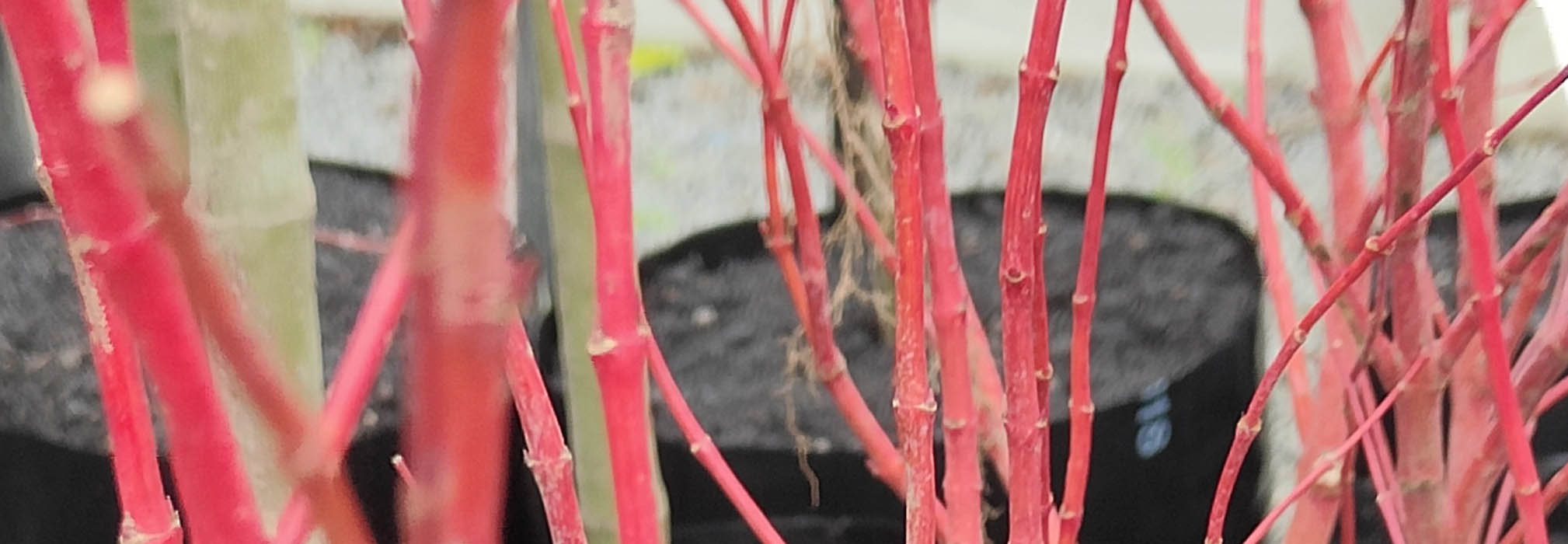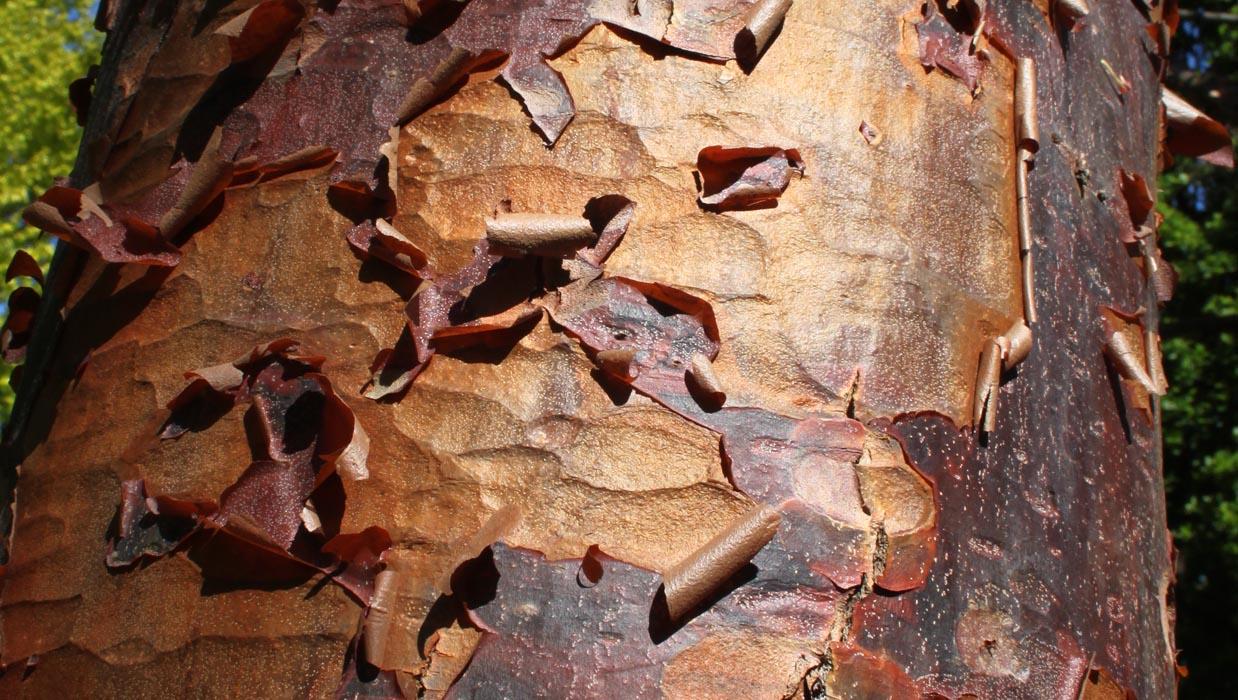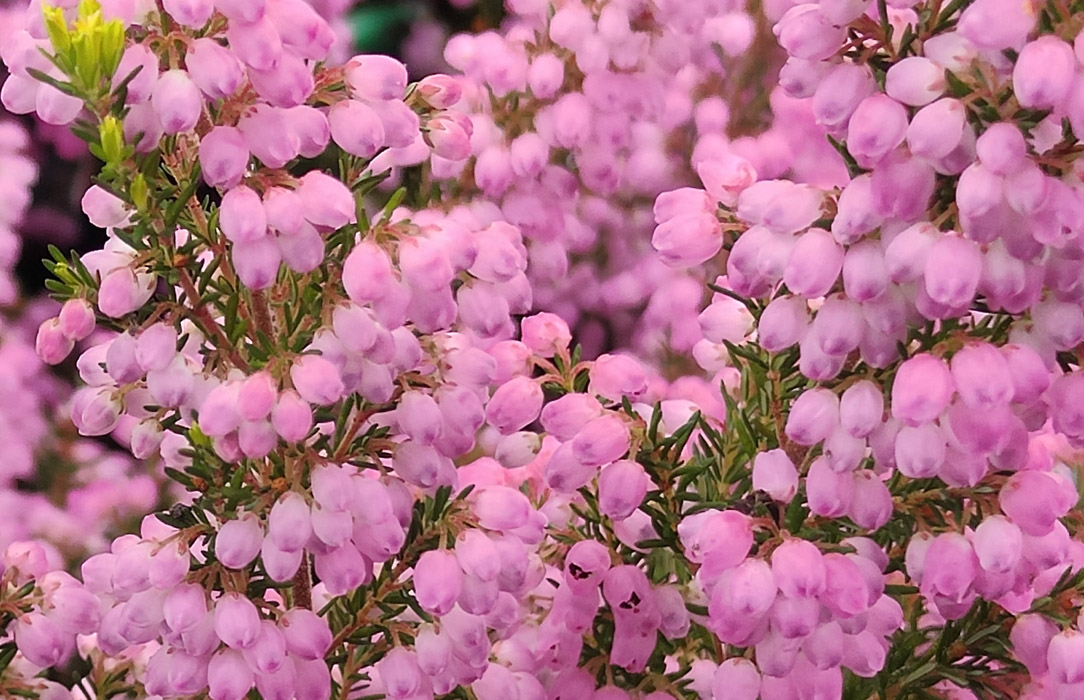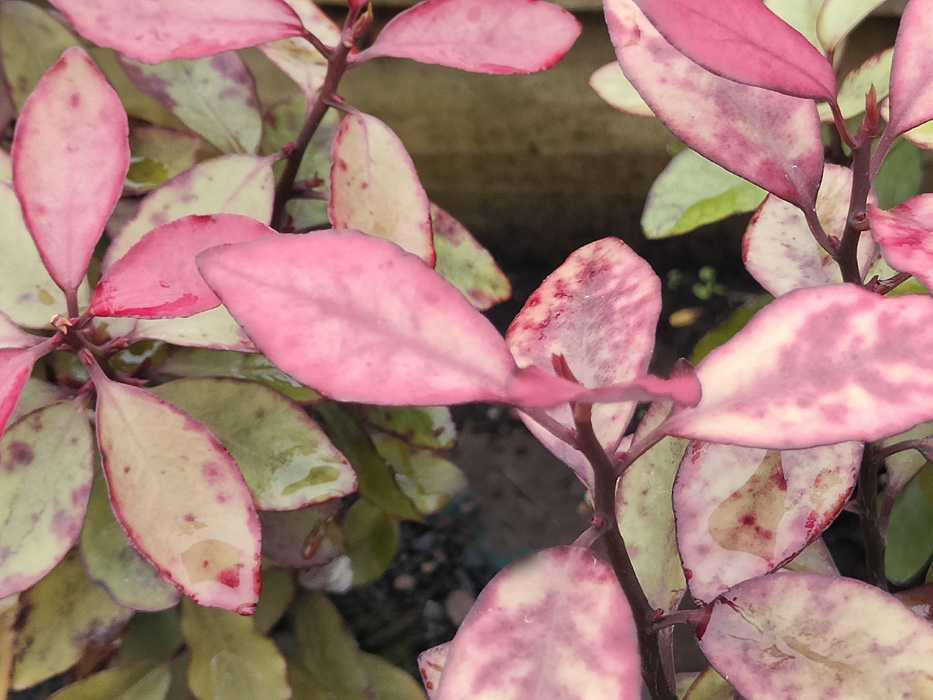Follow
the podcast on


After a few weeks of really misty, cold, and awful weather, I needed to get out of bed and find some inspiration for the garden. A “pick-me-up” if you like.
But where to go?
Yep – Hagley Park is always a good place, but so are the garden Centres!
The difference is quite obvious: The Botanical Gardens will show you stuff that was planted many decades ago. It’s the picture of the future – a glimpse into your garden the children will enjoy after you’ve moved on.
How about the “now” – or maybe the next 10 years or so?
Impatient? Perhaps…
So I went to Oderings to have a look for some quick colour, tincture, complexion, some colōris, or, as the Spanish Language so elegantly describes: el color.
Start with the Letter A: Acer Known here as Maple.
Acer senkaki is obviously a Japanese maple. It glows red in Winter (and it’s quite pretty as a summer tree too).

You don’t have to wait for it – you can buy it right now to cheer you up.
The next Acer is A. griseum (the paper bark maple) a Chinese species that is actually quite rare in nature, but reasonably common in gardens owned by observant gardeners. Don’t be fooled by the species name “griseum” (meaning grey) – it refers to the underside of the leaves.

The peeling cinnamon-coloured bark is what gives me hope: hope for a speedy springtime and hope that some young gardeners will see the beauty of back-lit leaves from a low-angled sun.
You want some weird Pink to cheer you up?
Here’s an Erica, simply because I kind-of grew up with plants like that in the Netherlands. Heather, Heaths (“de Hei”), and such plants belong to the Ericacea with almost 1000 described species. They’re tough and flower colours are often spectacular; great tucker for insects like pollinators.

But the coolest thing is that a good number of these Ericaceae have a habit of flowering in the middle of winter, and that can be brilliant!
And then there are Daphne and Hellebores and the fabulous scent of Osmanthus.

But perhaps it’s a good opportunity to highlight some Native winter jewels, like Libertia peregrinans.
Or the range of Corokias (Geenty’s Ghost and Frosted Chocolat). These last two make fab hedges!!

We also have weirdly bright Cabbage Trees (Cordyline) and strangely dark Flaxes, small and tall.

No doubt all found as unexpected genetic morphs or cross-bred entities; mind you, I must say that the dark “background” flaxes really fit well in many gardens and the nectar feeding birds are still keen to visit the flowers in late spring.
One native shrub that always bowls me over (when visiting the Catlins) is the relatively slow growing Pseudowintera colorata, also known as Horopito. This shrub is totally unexpectedly beautiful as just about every specimen has a different colour-ratio, live and in nature.

Now that’s a shrub worth investing in, especially as you can eat the leaves, not just in Māori dishes, but also in Indonesian delicacies.
It tastes just the way it looks: On fire!
LISTEN ABOVE
Take your Radio, Podcasts and Music with you









